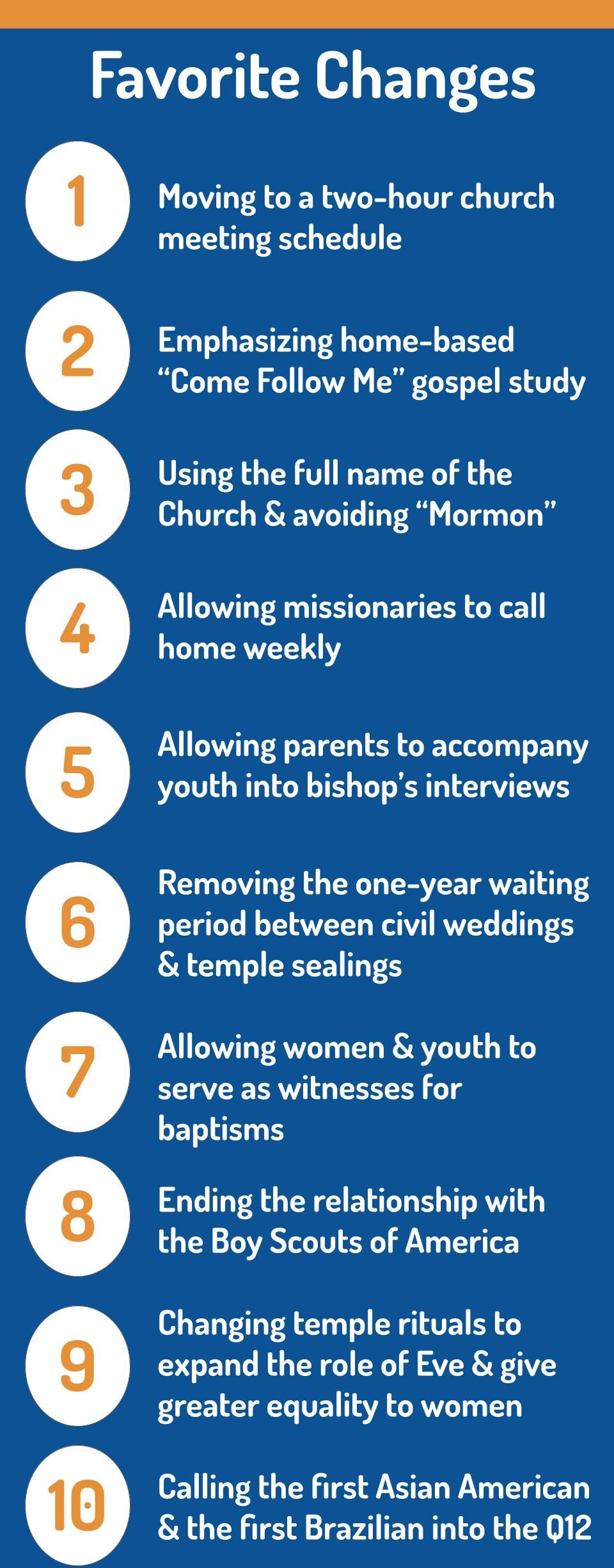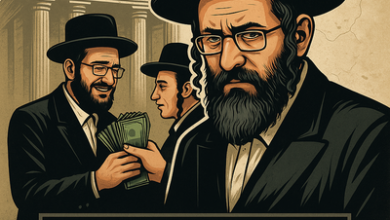
(RNS) — Russell M. Nelson, who has been president of The Church of Jesus Christ of Latter-day Saints since 2018, turned 100 last week. Amid the great display of affection and fanfare that church members showered on him during the celebration, some people wondered aloud which of his many accomplishments he will be remembered for.
After all, he has introduced a great many changes. (The church has published a helpful and comprehensive list of them here.) And not just to culture and policy, but to some of the most sacred doctrinal aspects of the faith, including four separate revisions to the temple endowment ceremony. (It’s now considerably shorter than it used to be and has greater equality between men and women.)
In the Next Mormons Survey 2, fielded in 2022 and 2023, we asked 1,420 Americans who identified as members of the LDS church which of President Nelson’s changes were their favorite. Since we didn’t want the survey question to be unwieldy, we narrowed that list of changes to 15 and asked whether respondents viewed them as very favorable, somewhat favorable, neither favorable nor unfavorable, somewhat unfavorable or very unfavorable.
Any respondent who judged at least one item as “very favorable” then received a follow-up question asking which of the changes they were most enthusiastic about. Here, the 1,268 people who qualified for the follow-up question could only choose one of the items they had felt “very favorable” toward.
My research partner Benjamin Knoll and I devised this follow-up question because we felt there would likely be an “all in” segment of the LDS population that reported feeling very positive about every single change, making the results of the opening question less useful as an overall measurement. But a “where the rubber meets the road” question that forced respondents to choose just one thing could give us a better gauge of which changes were most beloved by members.
The upshot? Church members are very, very happy about having Sunday church services be two hours instead of three. That shortened schedule ranked first of 15 possible options in the follow-up question. Here were the top 10 vote-getters, in order:

The top 10 favorite changes in The Church of Jesus Christ of Latter-day Saints since 2018, from the Next Mormons Survey 2, fielded in 2022 and 2023 by Qualtrics and Dynata.
Taken as a whole, the list is striking in its various appreciative nods to modernity. President Nelson’s tenure in leading the church has been noteworthy for tilting toward the “beehive” rather than the “angel,” to use the late sociologist Armand Mauss’ terminology. Mauss famously wrote that Mormonism has to navigate a careful tightrope of assimilation (represented by the beehive) and retrenchment (represented by the angel) in order to attract and retain members. Shift too far toward assimilation, and the church will lose its necessary distinctiveness and look like everybody else. Shift too far in the other direction by doubling down in retrenchment, and members will balk at being too different from the rest of the world.
Most of these top 10 options represent the church’s forms of assimilating to a changing world.
Two-hour church and home-based gospel curriculum both accommodate the reality that people have less time than in the past (or at least perceive that to be the case) and are sometimes less willing to spend that free time in church. And emphasizing the full name of the church rather than “Mormon,” one of President Nelson’s decades-long pet peeves, is assimilationist in that it attempts to stress that Latter-day Saints are followers of Jesus Christ rather than part of a strange sect.
Allowing parents to go with their kids into bishop’s interviews, and to talk to their missionary children once a week instead of just twice a year, accommodates a kind of hands-on parenting that is more common today than in the past. It also reflects a contemporary focus on the mental health of young people.
Removing the one-year waiting period that used to be required for U.S. couples wanting to get sealed in the temple after a civil ceremony means more couples will choose to have that civil ceremony. This means non-LDS friends and family members can attend their civil weddings, unlike the temple sealings that are closed to the public. This, too, is assimilation.
Giving women an expanded ritual role in witnessing baptisms — and even re-scripting the sacred temple endowment ceremony so women now promise to obey God directly rather than harken to their husbands — demonstrates that the church is coming on board, however glacially, with the idea of greater responsibilities for women.
Finally, calling two apostles who are not white Euro-Americans showcases the church’s greater commitment to racial diversity and to being a global religion rather than merely an American one. Again, this change was very long overdue, but kudos to the then-90-something President Nelson for being the prophet who began diversifying the church’s highest ranks. Recall that just a few years before, then-President Thomas L. Monson had the opportunity to do so when suddenly there were three open spots within the Quorum of the Twelve — and he filled all three spots with white men from Utah.
In fact, apart from the severing of ties with the Boy Scouts, all of the top 10 changes reflect U.S. Latter-day Saints’ desire to assimilate to the broader culture. But what’s at the bottom of the list is also interesting, because the least popular items may reflect that church members don’t want too much assimilation. They’re not wild about renaming the Mormon Tabernacle Choir as “the Tabernacle Choir at Temple Square,” even though they seem to love the general idea of emphasizing the name of the church rather than “Mormon.” And they’re not fans of President Nelson’s decision to discontinue church-sponsored pageants such as the one at the Hill Cumorah.
Moreover, they’re not apparently wild about the church’s “Ministering” program that introduced greater flexibility and reduced the amount of reporting from the home and visiting teaching programs it replaced. If cultural assimilation were the overarching goal of U.S. members, the new Ministering program would seem to fit that need. But they appear to be ambivalent about it, which means we should be careful in assuming members are fully invested in assimilation.
One thing they’re not ambivalent about is President Nelson himself. In a separate question that went to 849 respondents who were asked to identify their favorite church leaders, he carried the day at #1, the most popular of all current leaders. Happy birthday, President Nelson.
Related:
Source link




